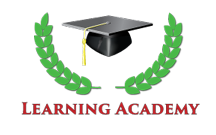
- Description
- Objectives
- Outline
- Materials
- System Requirements
The way you teach is as important as what you teach. If you are interested in working with adult learners, our course will provide you with a better understanding of what it takes to aid in the education of working professional adult students. Today, teaching requires more creativity and understanding. Instructors need to be aware of the diversity of adult learners and instructors must retain a greater depth of skills than ever before. In this course, you will learn how to use the most current methods in adult learning to give you the confidence you need to succeed and overcome the challenges that accompanies the adult learner.
After completing this course, you should be able to:
- Recall the different types of presentation models used in the adult learning environment
- Recognize the different types of lecturing methods
- Define experiential methods of teaching
- Identify effective questioning techniques
Teaching Adults Module 1
Teaching Methods and Managing Diversity
Adult learning begins with a student who has a desire for new knowledge or a need for new experience. Module one will guide instructors to help facilitate students with this journey through a partnership. With adult learners there is an active dual participation in the learning process. We will look at how different types of presentation methods to use in the adult learning environment. Also included in module one is the responsibility of the instructor to create a respectful environment that encourages diversity and overcomes personal biases and stereotypes.
- Presentation Methods
- Demonstration-Performance Methods
- Self-Paced and Discussion Methods
- Understanding Differences
- Recognizing Your Personal Biases
Teaching Adults Module 2
The Lecture and Case Study Methods of Teaching
Traditionally, lecturing has been the most popular teaching method at colleges and universities. In module two, we will look at the different types of lecturing methods and the pros and cons with each. When you hear the word “lecture,” you think “boring” or “nap time.” However, we will look at ways to incorporate visual aids and other tools, to create dimension in your lecture. Also included in module two is how you communicate with your students. What are you displaying by your eye contact, body movement, and gestures? Being aware of your physical communication will greatly improve your course lectures. The Case Study Method is also discussed in module two. Using the Case Study Method will allow students to partner with their instructor in applying concepts and principles they are studying. We will explore these types of cases and how to best facilitate each.
- Types of Lectures
- Advantages and Disadvantages of the Lecture Method
- Resources, Tools, and the Presentation
- Types of Cases and Benefits of Each
- Facilitating the Case
Teaching Adults Module 3
The Teaching Interview and Experiential Methods of Teaching
The Teaching Interview Method of teaching allows for controlled conversation aimed at achieving new objectives. Module three will look at the benefits gained by using this type of facilitation in your class and will also discuss how to “let go” of your authority and allow a give and take type of instruction it requires. Exploring the Experimental Methods of Teaching is also included in module three. These fun to use and relatively easy to administer exercises require the instructor to be thoughtful, but also allows for fun student/instructor interaction.
- Planning for the Teaching Interview
- Conducting and Ending the Teaching Interview
- Post-Interview Evaluation
- Types of Experiential Exercises
- Selecting a Suitable Experiential Activity
Teaching Adults Module 4
Questions, Feedback, and Inspiring Confidence
New instructors are not always trained in how to ask questions. Module four will examine how to form the right questions that lead to more student learning. Asking questions can be the largest producer in encouraging student thinking. Feedback reassures students to work harder and in module four, we will look at the best way to give and receive effective feedback. Self-confidence closely tracks how students learn, accomplish, and behave. As an instructor, you have the power to increase or decrease student self-confidence. Module four identifies the activities you can take to develop the adult learner confidence in their academic capability.
- The Power of Questions
- Effective Questioning Techniques
- Encouraging Participation
- Characteristics of Effective Feedback
- Inspiring Adult Learners
Ed4Career is committed to being both environmentally conscious and making it easier for you to study! We’re making your education mobile! All of our textbooks are now provided as eTextbooks. You can access them on your laptop, tablet, or mobile device and can study anytime, anywhere.
The move away from physical books to eTextbooks means you get the latest, most up-to-date version available. This also makes your training more accessible, so you can study anywhere you have your phone or tablet. The best part is that all materials are included in your training cost so there are NO extra fees for books!
Internet Connection
- Broadband or High-Speed - DSL, Cable, and Wireless Connections
*Dial-Up internet connections will result in a diminished online experience. Classroom pages may load slowly and viewing large audio and video files may not be possible.
Hardware Requirements
- Processor - 2GHz Processor or Higher
- Memory - 1 GB RAM Minimum Recommended
PC Software Requirements
- Operating Systems - Windows 7 or higher
- Microsoft Office 2013 or higher. Also, you could use a general Word Processing application to save and open Microsoft Office formats (.doc, .docx, .xls, .xlsx, .ppt, .pptx)
- Internet Browsers - Google Chrome is highly recommended
- Cookies MUST be enabled
- Pop-ups MUST be allowed (Pop-up Blocker disabled)
- The Kindle Reader App or VitalSource Bookshelf App are needed for many of our courses (No special equipment needed. This can be downloaded for FREE onto your computer.)
- PowerPoint Viewer (if you do not have PowerPoint)
- Adobe PDF Reader
- QuickTime, Windows Media Player &/or Real Player
MAC Software Requirements
- Operating Systems - Mac OS x 10 or higher with Windows
- Mac office programs or a Word Processing application to save and open Microsoft Office formats (.doc, .docx, .xls, .xlsx, .ppt, .pptx)
- Internet Browsers- Google Chrome is highly recommended
- Cookies MUST be enabled
- Pop-ups MUST be allowed (Pop-up Blocker disabled)
- The Kindle Reader App or VitalSource Bookshelf App are needed for many of our courses (No special equipment needed. This can be downloaded for FREE onto your computer.)
- PowerPoint Viewer (if you do not have PowerPoint)
- Adobe PDF Reader
- Apple QuickTime Media Player


